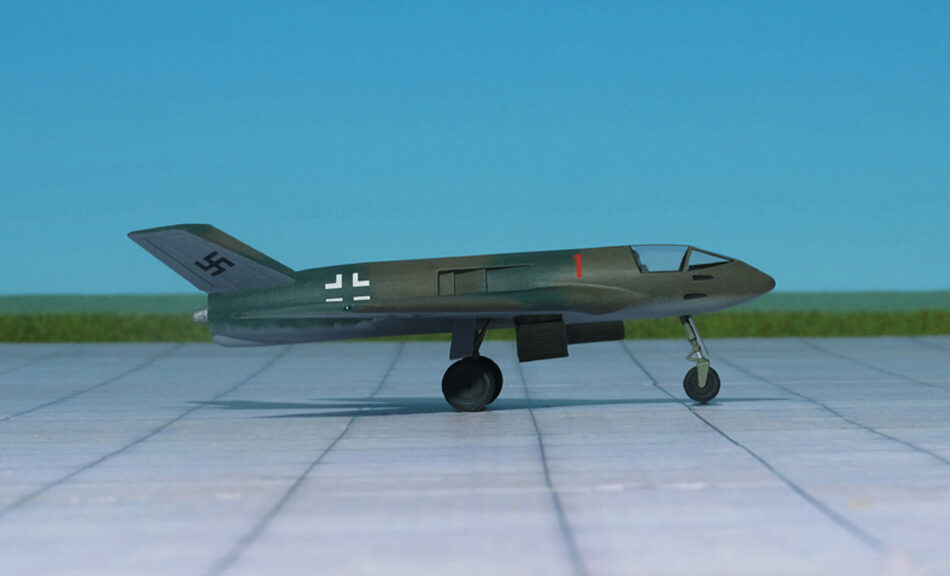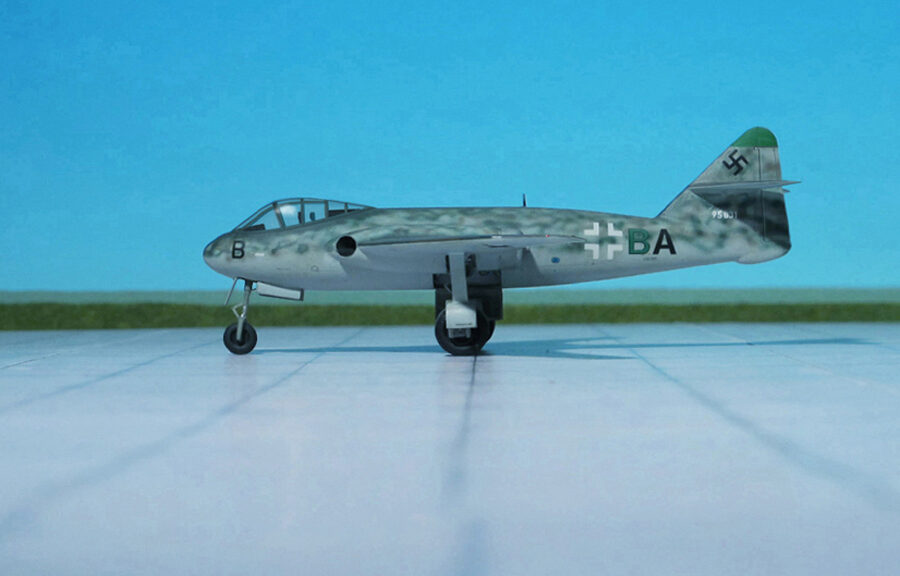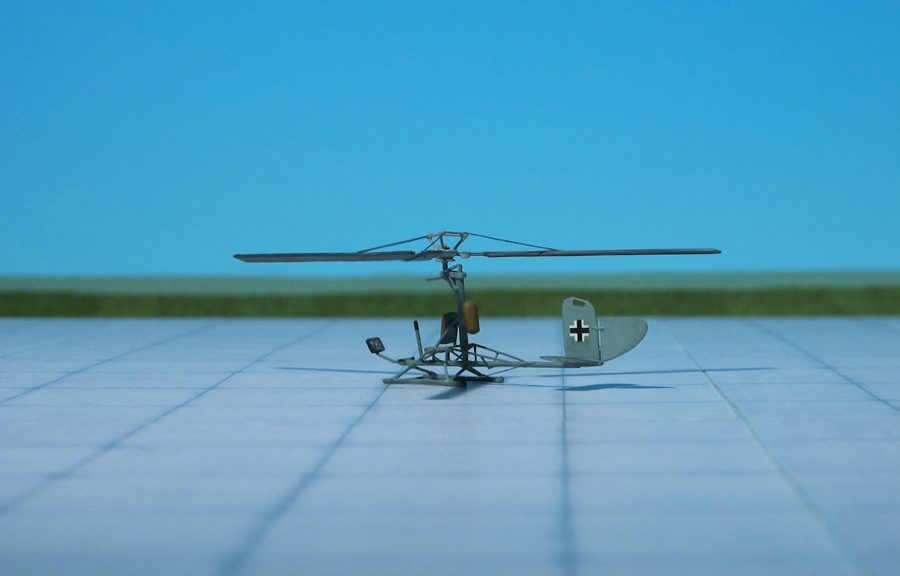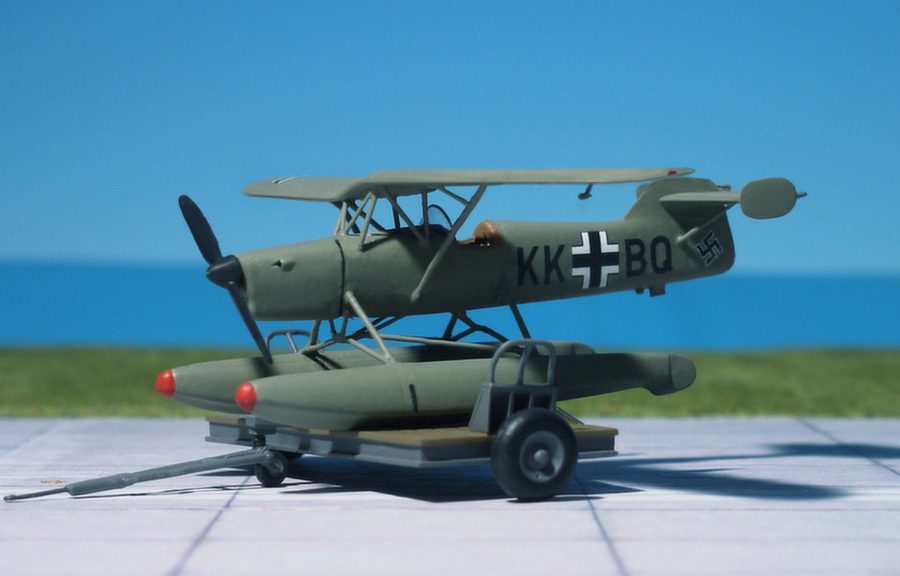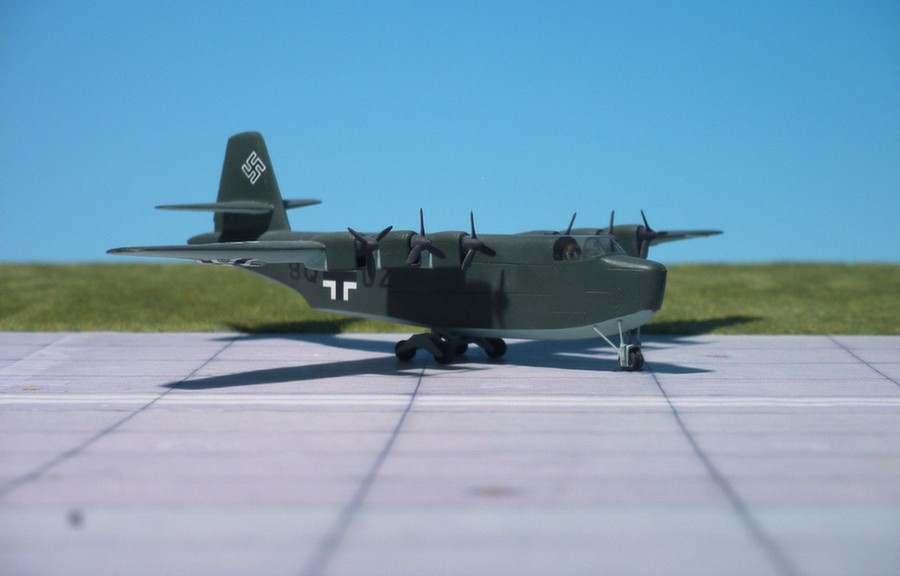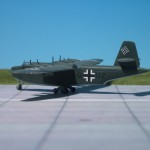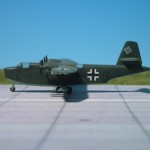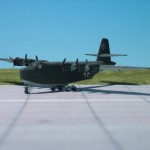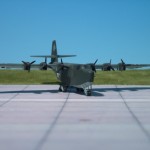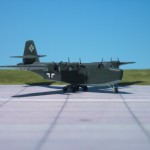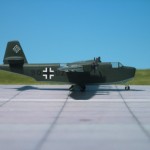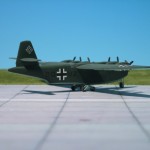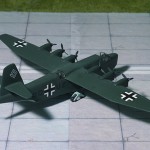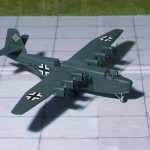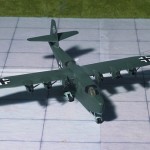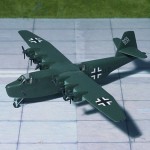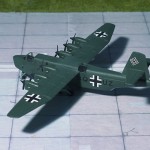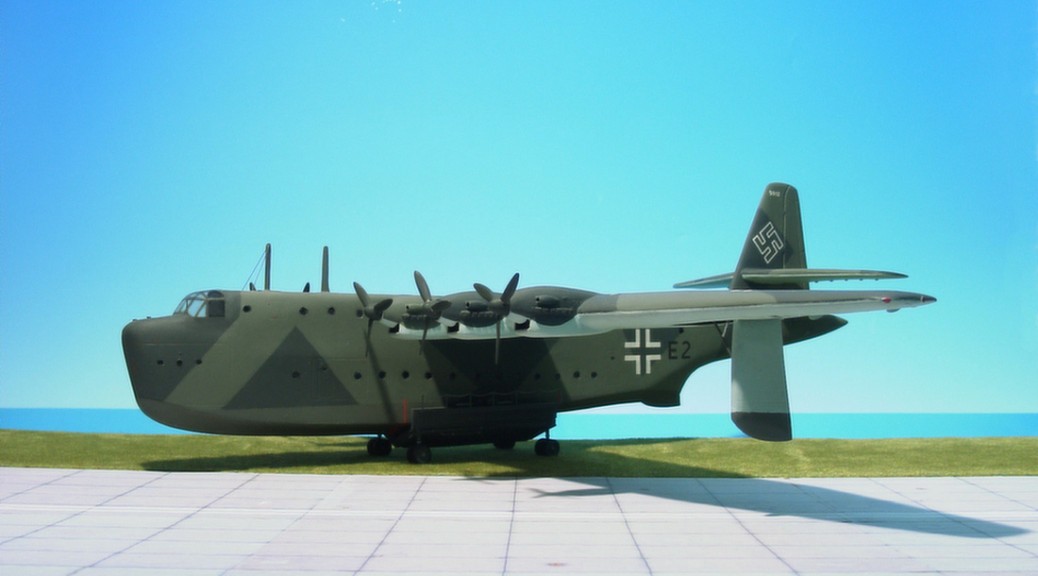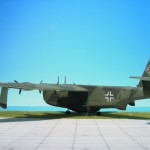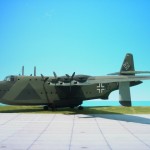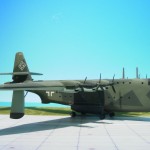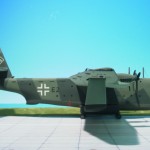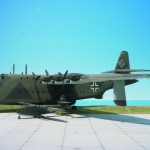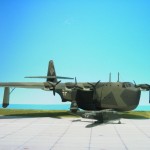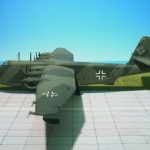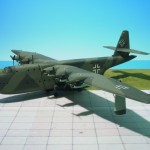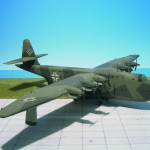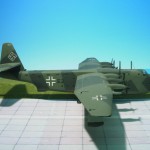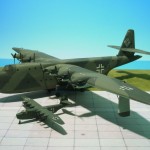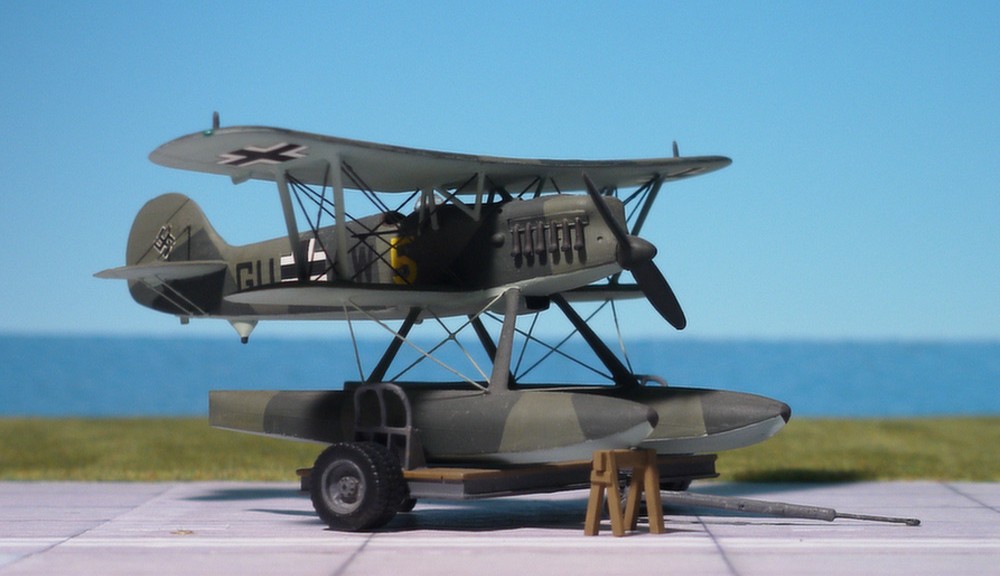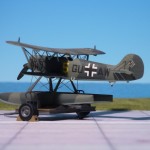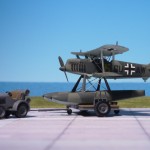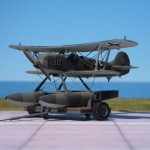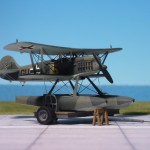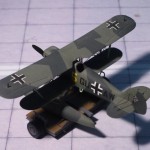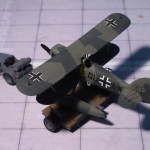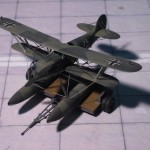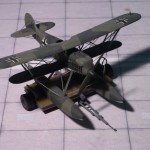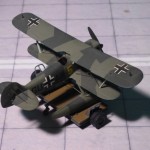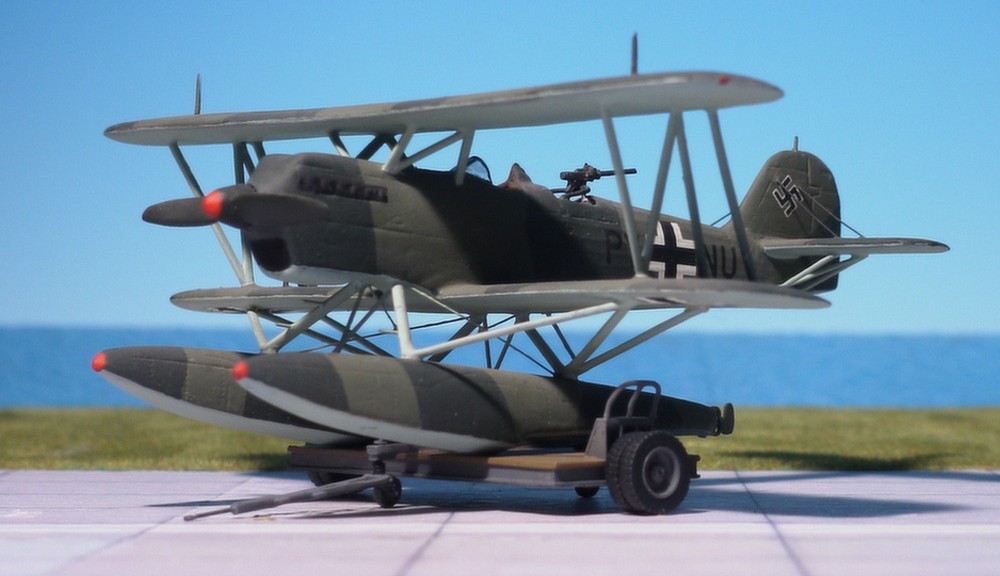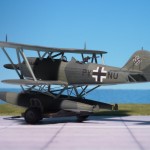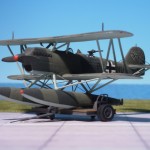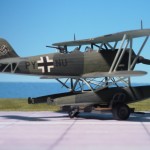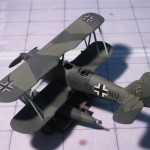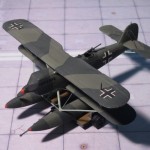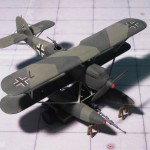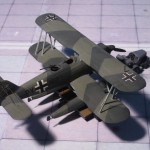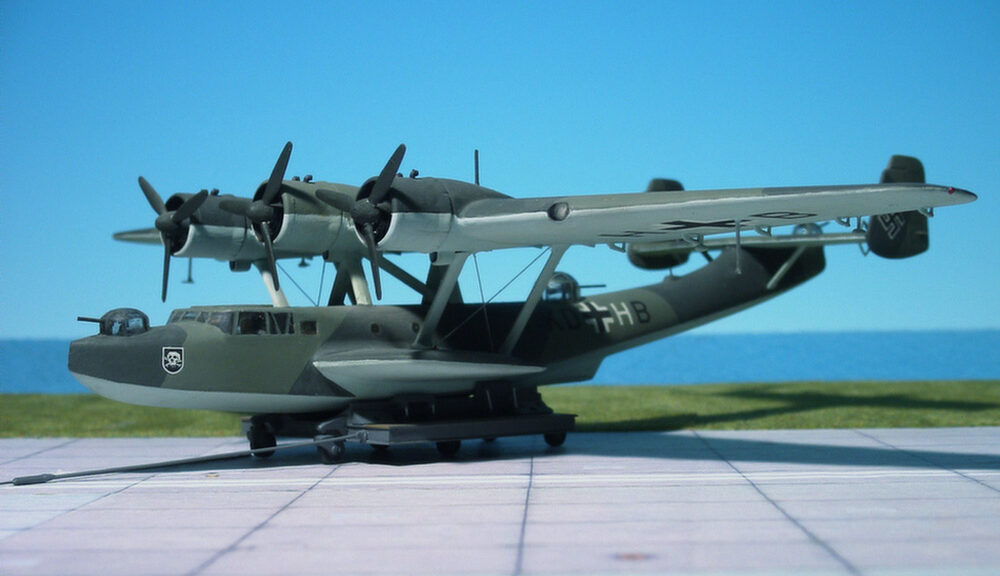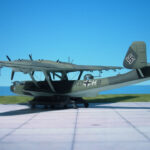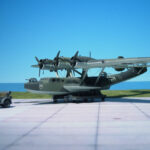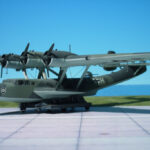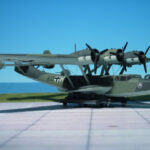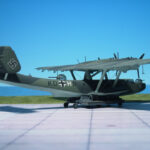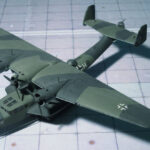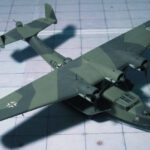TYPE: Fighter, Project
ACCOMMODATION: Pilot only
POWER PLANT: One Heinkel-Hirth HeS 011A0 turbojet engine, rated at 1.300 kp thrust
PERFORMANCE: 680 mph (estimated)
COMMENT: The Messerschmitt P.1112 was a proposed German turbojet fighter, developed by Messerschmitt AG during the closing stages of World War II, and intended for use by the Luftwaffe (German Air Force). The progress of the war prevented the completion of a prototype before the fall of Nazi Germany. Its design, however, had a direct influence on postwar US Navy carrier fighters.
The work on the Me P.1112 started on February 1945 ( Ten weeks before the unconditional surrender of the Reich!!!!!) after Willy Messerschmitt decided to halt the development of the Messerschmitt Me P.1111, which would have required, as standard equipment, a pressurized cockpit and ejection seat. Designed by the head of the Messerschmitt Project Office W. Vogt, between 3rd and 30th March 1945 as an alternative to the Me P.1111, the Messerschmitt Me P.1112 design was less radical than the Me P.1111 and incorporated the lessons learned from the development of the Messerschmitt Me P.1110 design. Voigt estimated that the Me P.1112 would commence flight testing by mid-1946.
Intended to be powered by a single Heinkel-Hirth HeS 011 turbojet engine, three design concepts of the Me P.1112 were developed. The last proposed design was the Me P.1112/V1 using a V-tail design and fuselage lateral intakes; the two first were the Me P.1112 S/1, with wing root air intakes, and the Me P.1112 S/2, with fuselage lateral intakes, both with a larger, single fin; both designs lacked conventional horizontal stabilizers. All three had a fuselage maximum diameter of 1.1 metres.The aircraft’s wing design was similar in appearance to that of Messerschmitt Me 163 Komet rocket fighter. The pilot was seated in a semi-reclined position, and was equipped with an ejection seat.
A partial mockup of the Me P.1112 V/1, consisting of the aircraft’s forward fuselage section, was constructed in the “Conrad von Hötzendorf“ Kaserne at Oberammergau, Bavaria, but the Messerschmitt facilities there were occupied by American troops in April 1945, before construction of the prototype could begin
Although the Me P.1112 was never completed, follow-on designs were already proposed, even as design work on the type itself was done. These included a proposed night fighter version, which was intended to be fitted with twin engines mounted in the wing roots of the aircraft.
Following WW II, Voigt’s experience in tailless aircraft design was put to use by the Chance Vought Company in the United States, where he was involved in the design of the Chance Vought F7U Cutlass fighter (Ref 24).
